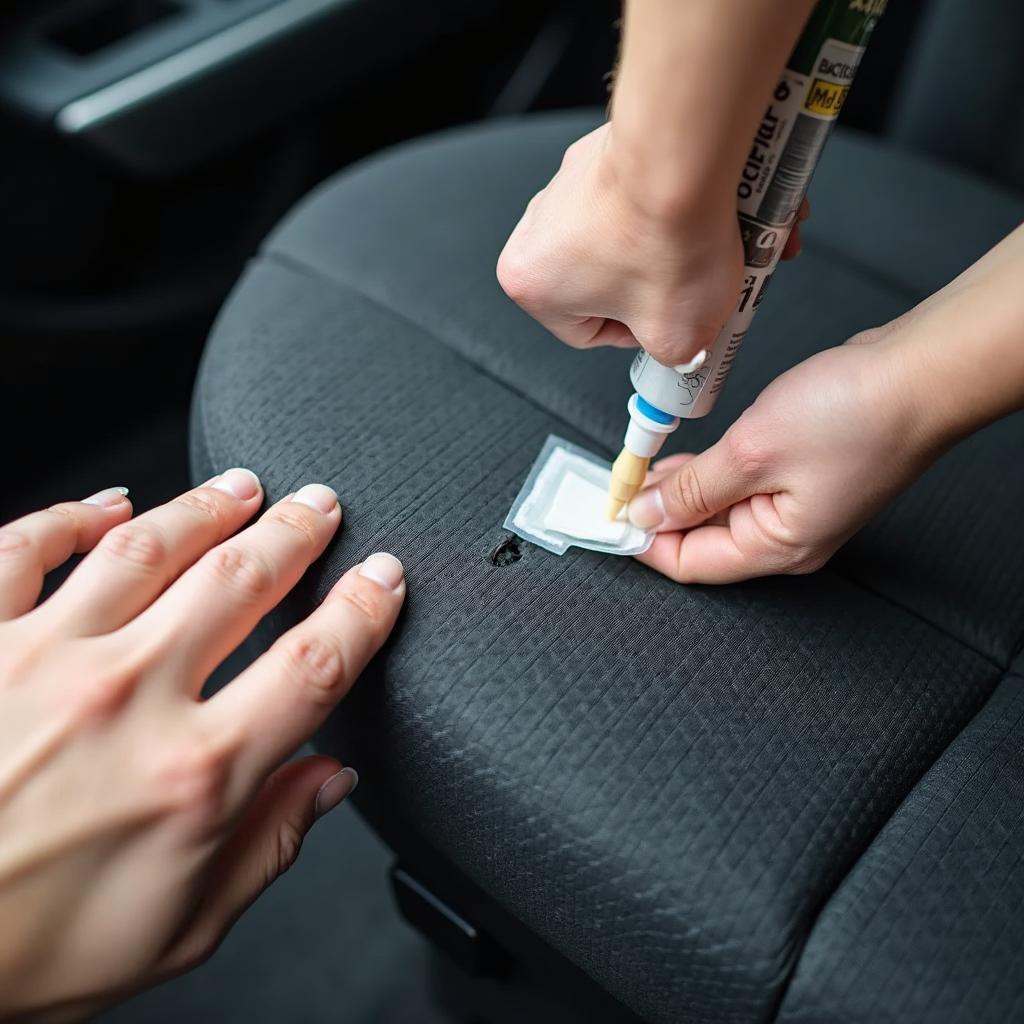Worn car seat padding is a common problem, especially in older vehicles. Not only is it unsightly, but it can also affect your comfort and support while driving. Thankfully, you don’t need to be a mechanic to learn how to repair a worn car seat padding. With a few basic tools and some patience, you can restore your car seats to their former glory and enjoy a more comfortable ride.
Assessing the Damage: What to Look For
Before diving into the repair process, it’s crucial to assess the extent of the damage to your car seat padding. This will help you determine the necessary tools, materials, and approach. Here are some common signs of worn car seat padding:
- Visible compression or flattening: Over time, the foam padding inside your car seats can lose its resilience and become compressed, leading to a noticeable dip or sag in the seat.
- Loss of support: As the padding wears down, you may experience reduced support, especially during long drives, leading to discomfort and potential back pain.
- Rips, tears, or cracks: Inspect the padding for any visible damage, which can worsen over time and compromise the integrity of the seat’s structure.
- Unpleasant odor: Worn padding can trap dirt, dust, and moisture, creating an unpleasant musty smell inside your car.
Repair Options: Choosing the Right Method
Depending on the severity of the damage and your budget, several repair options are available:
1. Patching Minor Tears and Cracks
For minor tears or cracks, patching can be a quick and cost-effective solution. Use a strong adhesive designed for automotive upholstery and a fabric patch that matches the color and texture of your car seat. Ensure the patch is larger than the damaged area for a secure hold.
2. Replacing the Foam Padding
If the foam padding is severely compressed or damaged, replacing it is the best way to restore your car seat’s comfort and support. You can purchase replacement foam online or at an auto parts store.
Expert Tip from John Miller, Certified Automotive Upholstery Technician:
“When choosing replacement foam, consider its density and thickness. A higher density foam will offer more support and durability, while the thickness should match the original padding for a proper fit.”
3. Adding a Seat Cushion or Cover
For a quick and easy fix, adding a seat cushion or cover can provide extra comfort and conceal minor imperfections. Seat cushions come in various materials and thicknesses, allowing you to customize your level of support.
Pro Tip: Look for seat covers specifically designed for your car model for a perfect fit.
DIY Repair vs. Professional Upholstery: Making the Call
While some car seat padding repairs can be handled with DIY methods, certain situations warrant professional help. If you’re dealing with extensive damage, intricate upholstery work, or lack the time and confidence to tackle the repair yourself, seeking professional upholstery services is advisable.
Expert Insight from Sarah Williams, Owner of Williams Auto Upholstery:
“While DIY repairs can save you money, professional upholsterers have the experience, tools, and expertise to handle complex repairs and ensure a high-quality, long-lasting result.”
Conclusion: Restore Your Ride’s Comfort and Appeal
Learning how to repair a worn car seat padding can save you money and enhance your driving experience. By assessing the damage, choosing the right repair method, and considering professional help when necessary, you can restore your car seats to their former glory and enjoy a more comfortable and enjoyable ride.
FAQs
1. Can I use regular household glue to repair car seat padding?
It’s not recommended to use regular household glue, as it may not withstand the heat and moisture conditions inside a car. Use a specialized adhesive designed for automotive upholstery for a secure and long-lasting bond.
2. How do I find replacement foam padding that matches my car seat?
You can find replacement foam padding online or at auto parts stores. Look for foam specifically designed for automotive use and consider the density and thickness to match your original padding.
3. How long does it take to replace car seat padding?
The time required to replace car seat padding varies depending on the complexity of your car seat design and your skill level. It can range from a few hours to a full day.
4. Can I wash my car seat covers?
Most car seat covers are washable, but always check the care instructions provided by the manufacturer. Use a mild detergent and avoid harsh chemicals that can damage the fabric.
5. How often should I inspect my car seat padding for wear and tear?
It’s a good practice to inspect your car seat padding for signs of wear and tear at least twice a year. Regular inspection helps you address issues early on and prevent further damage.
Learn More About Car Seat Repair
For more information and step-by-step guides on car seat repair, check out our other helpful articles:
- How to repair a car seat seam
- How to repair car seat
- Car mechanic simulator 2018 how to repair seat
- How to repair car seat cushion
- How to repair a car seat cover
Need professional assistance with your car seat repair?
Contact our team of experts via WhatsApp: +1(641)206-8880 or Email: [email protected]. We are available 24/7 to answer your questions and provide top-notch car repair solutions.


